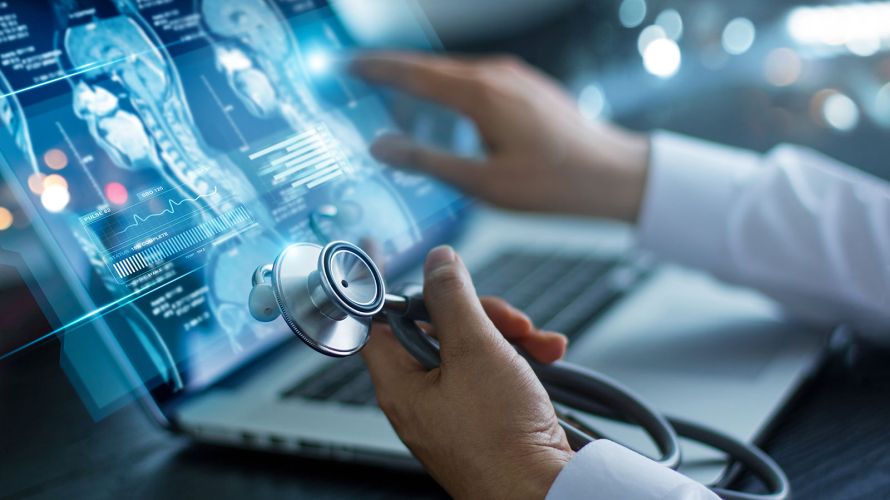
Data Science in Healthcare: Benefits and Applications
The massive amplification of big data in all aspects of life, from business to transportation, highlights how important it is in our everyday lives. Similarly, big data is transforming the medical sector, fundamentally changing how we conduct the most basic health monitoring procedures, and that too through the generation and display of unstructured information.
How data science fits into healthcare
Healthcare has come a long way in a relatively short period of time. Until a decade ago, electronic health records were relatively rare, and patient data was collected on paper. But as our devices have become more sophisticated, the way we collect and store information has also changed.
Now, data science is not just a nice little thing for medical practices. By using all the information created by patients, healthcare providers, and patients gain several benefits, including:
- Reduced overhead and costs
- Optimized diagnosis and treatment management
- Practical patient information
- Improved outcomes
And these benefits are just the beginning. Data science is at the heart of applications that add value to the entire healthcare industry, where time-saving and intelligent analytics are required.
Health care applications
No industry generates as much data as healthcare – a third of the world’s data. With all this big data, new technologies are rapidly evolving to use it to improve the quality of care and increase the efficiency and profitability of the entire system. Here are just a few ways the industry uses these massive amounts of information to advance medicine.
Medical image analysis
Analyzing medical images, including X-rays and CT scans, requires an experienced eye, extensive training, and work hours. Moreover, medical errors associated with missed diagnoses can put patients at risk and increase costs. But with machine learning, processing such images has become faster and more accurate.
Tracking a patient’s health status
The market for wearable medical technology and devices related to the Internet of Medical Things has been expanding recently, with $1.7 billion in venture funding in 2021. These devices and the data they create are doubly useful: Doctors benefit from monitoring their patients more closely, thereby providing more informed care, and patients benefit from the information transparency of these devices. When patients can track their health data, such as blood glucose levels or resting heart rate, their health is more likely to improve.
Drug discovery
Drug research and development is costly and time-consuming-one. The estimate puts the cost per drug at $985 million. But advances in data science have paved the way for a more robust drug discovery process that helps reduce the number of repetitive trials, which is partly responsible for the high cost. For example, by eliminating silos and integrating data sets using artificial intelligence tools, AstraZeneca has begun to shorten drug development times for chronic kidney disease and idiopathic pulmonary fibrosis, which are complex diseases for drug development. By identifying relevant data and analyzing trends in patient populations, AI helps scientists make data-driven decisions and prioritize their work.
Predictive analytics
Medicine has always relied on trial and error and patient observation to determine which treatments and medications produce the best results. However, many of these observations could only be made by testing long after the patient had started a particular therapy or the disease had progressed.
The total predictive analytics market is estimated to reach $38 billion by 2028. There are plenty of opportunities for predictive analytics in healthcare, where insights from aggregate patient data can improve medical decision-making and patient satisfaction. Armed with a more comprehensive set of disease-specific data, healthcare providers can ensure that the individual patient benefits from strategic and informed treatment management that considers their entire medical history or patterns in groups of similar patients.
Preventive care
Public health has recently shifted from an emphasis on interventional treatments – such as medication and surgery – to preventive therapies such as diet, exercise, and greater awareness of genetic predisposition. This emphasis on preventative medicine reduces costs, identifies gaps in the treatment of chronic disease, shows more significant results than treatment with intervention alone, and is helped in no small part by disseminating health care data.
Health care faces challenges on all fronts – new treatments, disparate systems requiring interoperability, and a seismic shift from intervention to prevention, not to mention the pressures and demands of industry compliance and an aging population needing more care. All of this can be alleviated through data science. By organizing, structuring, and analyzing the vast amount of information that providers and their patients already produce, health care can become more flexible, cost-effective, and empathic.
The future of data science in health care
In the 21st century, data science is actively used in health care to optimize surgeries, operations, and patient recovery procedures. In addition to technological advances and the increasing digitization of lifestyles, data science will help reduce healthcare costs by making quality healthcare services accessible to all.
Conclusion
The examples above of the use of data science in health care show that shortly, big data will be a crucial player in the medical industry, and how that data is stored and managed will influence how people’s health will be managed in the long term. Of course, this enormous potential comes with its own risks, such as a need for standardized data and ineffective data management policies. However, these challenges can be overcome by establishing some protocols for applying data science to health care, such as ensuring privacy, maintaining security, and improving the tools used to analyze data in health care to make it as error-free as possible.



